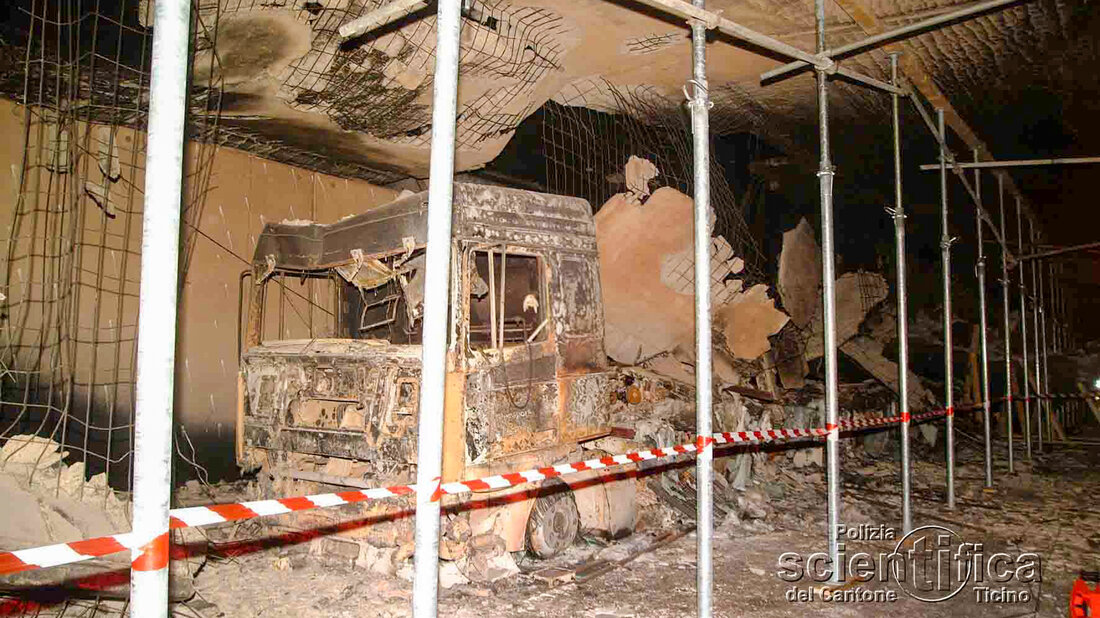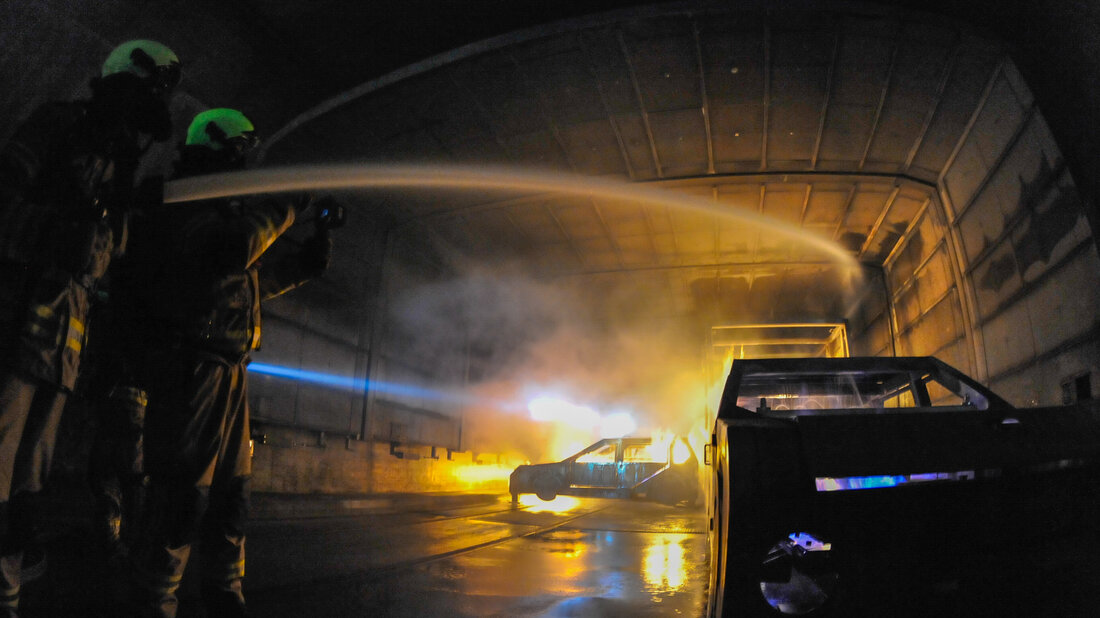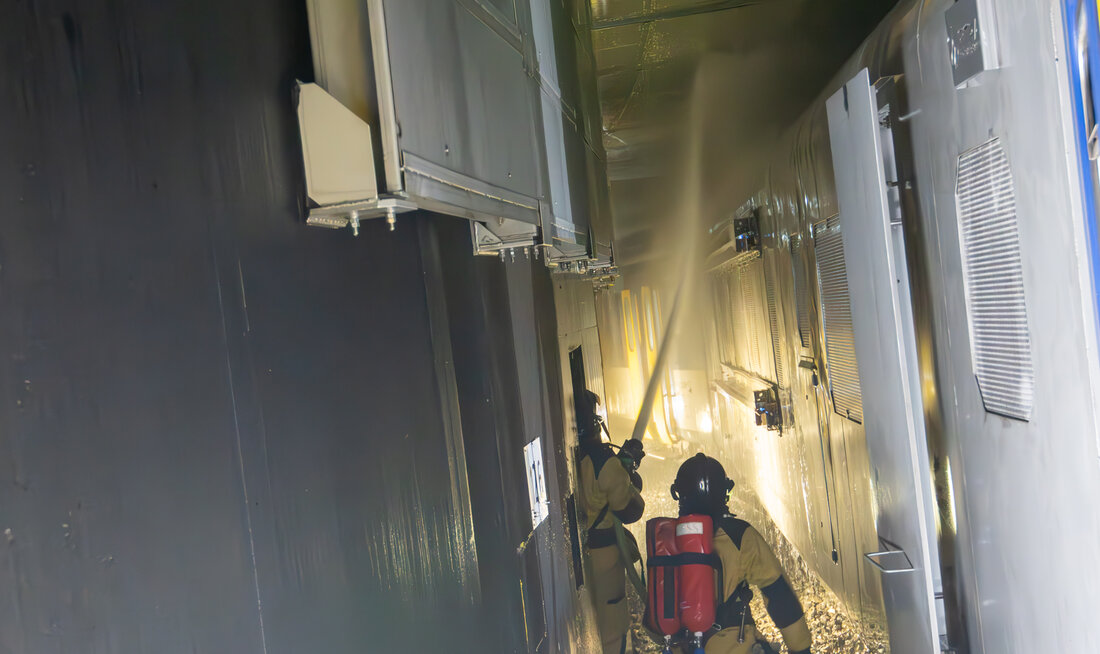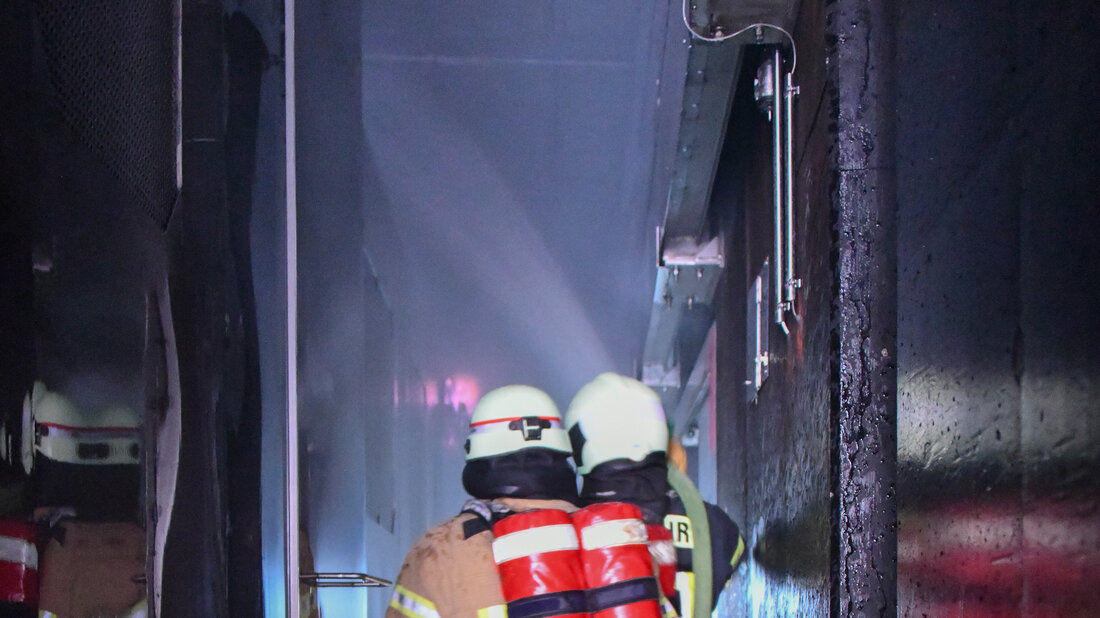Course participants repeatedly ask whether structural cooling is necessary for firefighting operations in road and railway tunnels. Our Didactics and Development Team has therefore reexamined this question and has come to the following conclusion: Structural cooling is an option and not a must. When in doubt, however, cooling should always be used to protect the firefighters. In this article, we explain the reasons for structural cooling.
Grave danger for firefighters
A tunnel built by mining techniques is unlikely to collapse as such, even at very high fire temperatures. However, chipping is always to be expected due to the effects of heat. If there are suspended ceilings or wall panelling in a tunnel, these can even collapse in extreme cases. It can seriously injure or even kill firefighters. Therefore, caution is required.

Cooling minimises the risks
In order to minimise the risks for the firefighters, the International Fire Academy recommends cooling the immediate vicinity of the burning vehicle from a safe distance before entering the area near the source of the fire. This applies, in particular, to ceilings, walls, and other vehicles in the vicinity. Cooling also reduces the spread of the fire and the heat radiation emitted by the heated components, thus reducing the heat load on the firefighters.

Damage caused by structural cooling
Under certain circumstances, the cooling measures can lead to structural damages due to the «quenching» of the heated components. When it comes to the safety of the firefighters, however, such «provoked» damage is the lesser evil than when emergency personnel are injured. Ideally, only pieces of concrete that have already cracked and are in danger of falling off are detached from the ceiling.

Structural cooling is an option, not a must
In rare cases, structural cooling may not be necessary, for example, in the case of a fire in the incipient phase. Under the expected operating conditions (smoke, poor visibility, high time pressure), it will usually be challenging to assess quickly and reliably whether structural cooling is required or not. That's why the International Fire Academy recommends: When in doubt, cool.

There may be special requirements in individual cases
But there are also exceptions: In individual cases, it is conceivable that structural cooling in tunnels could lead to avoidable structural damage. However, this can only be assessed in advance by the infrastructure manager, not by the fire service, in the event of an incident. A procedure other than the usual one must, therefore, be decided in the preparation phase, taking into account the safety of the firefighters, and must be documented accordingly in the operational plan.






![[Translate to English:] [Translate to English:]](/fileadmin/_processed_/2/2/csm_ifa_MAG_098_Instruktoren-UVA_29_381cda7cd8.jpg)